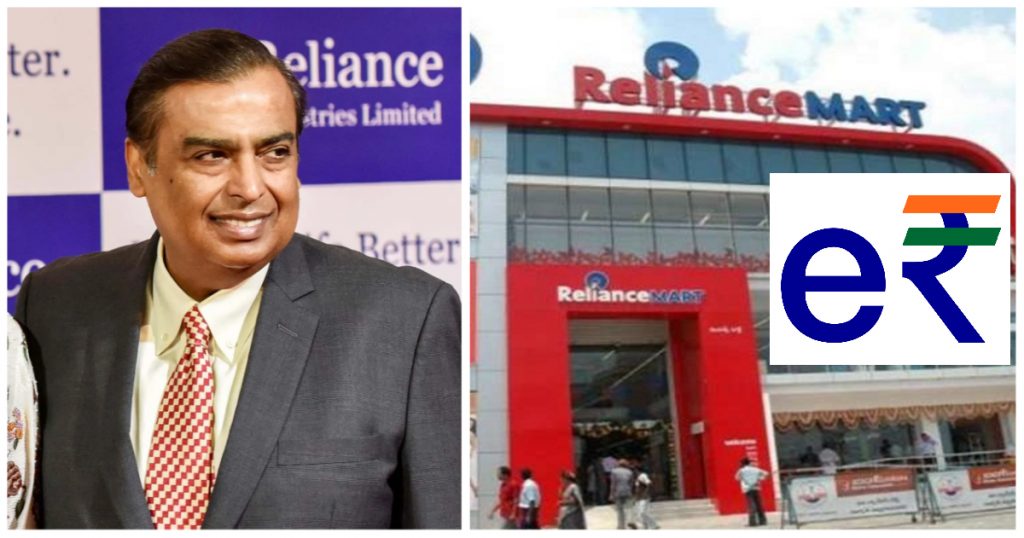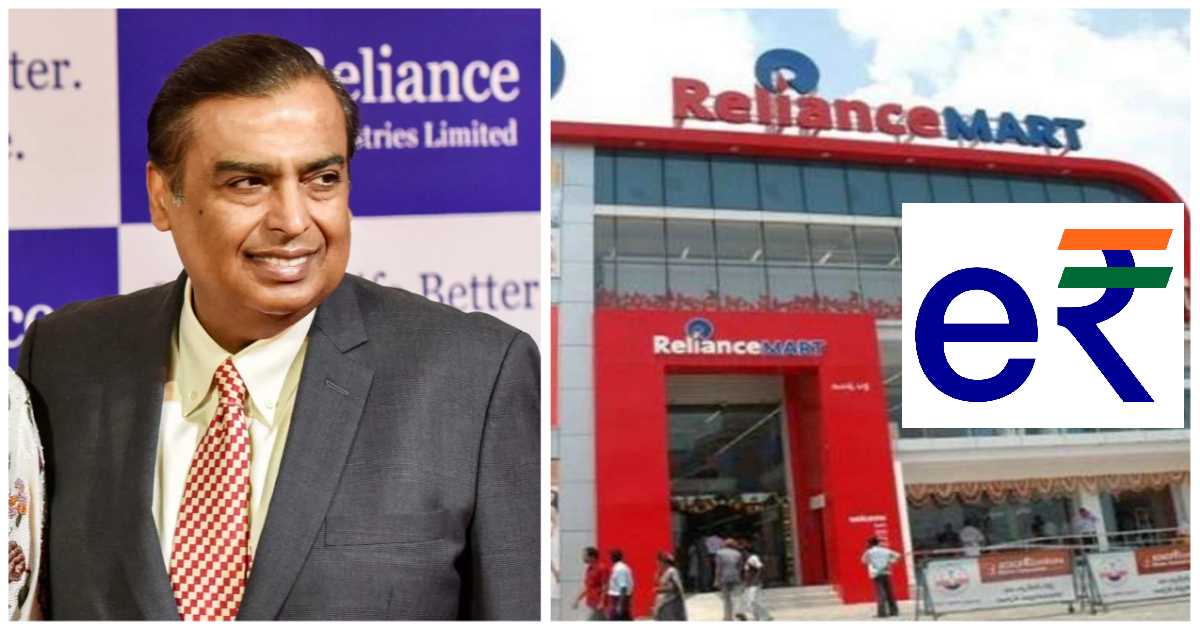UPI might’ve completely transformed how Indians pay for goods and services, but there could be another round of disruption on the horizon.
Reliance Retail has become India’s first retailer to begin accepting the Digital Rupee. Reliance will begin accepting the digital currency at its Freshpik store in Mumbai. It will soon accept the Digital Rupee at its 17,000 stores across 7000 cities and towns in India.

Reliance Retail stores will have a QR code at its outlets which will facilitate payments through the Digital Rupee. This QR code will be presented to customers after billing. “E-Rupee is another mode of payment for us which is replacing physical cash. We are ready with all our technology and backend, now depends on when banks and everybody else is ready,” said Reliance Retail Director V Subramaniam.
“This is actually your own wallet and is as good as carrying a physical wallet. You have privacy for all transactions that happen,” Subramaniam added.
The Digital Rupee is India’s Central Bank Digital Currency (CBDC). It is a tokenized form of the Indian rupee, and uses blockchain technology to operate. The Digital Rupee is already being used for interbank transfers, and is also being piloted among small retailers in several cities in India.
The Digital Rupee has many of the characteristics of the traditional rupee, but in digital form — like currency notes, the Digital Rupee will be uniquely identifiable, and like currency notes, transactions of small sums done through the Digital Rupee will be anonymous. The Digital Rupee could also eventually help in cheaper and real-time financial transactions across India’s borders.
There are several Central Banks that are looking to launch their own digital currencies, but India looks poised to become the first nation with a widespread rollout of its own CBDC. Rolling out a CBDC can have many benefits — for starters, it saves the country the cost of printing currency notes, which amounted to Rs. 5,000 crore in FY 22 alone. The Digital Rupee will also save transaction costs, and costs of storing and moving physical notes.
Crucially, the Digital Rupee will be India’s next iteration in digital payments after UPI. UPI has already revolutionized India’s payments space, and now accounts for more transactions than debit and credit cards. But India’s government isn’t ready to rest on its laurels, and has introduced yet another form of digital payments in the Digital Rupee. And with retailers like Reliance leading the way, it might not be long before the Digital Rupee — like UPI — becomes ubiquitous as a form of payment across the length and breadth of India.
